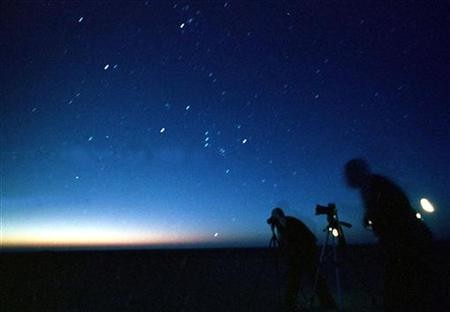Using NASA's Hubble Space Telescope, scientists have discovered a huge halo of gas, whose apparent size is approximately 100 times the diameter of the moon, around the Andromeda Galaxy, which is also known as Messier 31 or the M31.
Published in Astrophysical Journal, the discovery was discussed in a study by astrophysicists Nicolas Lehner and J. Christopher Howk of the University of Notre Dame and Bart P. Wakker of the University of Wisconsin.
"Halos are the gaseous atmospheres of galaxies," Lehner said in a statement released by Notre Dame News. "The properties of these gaseous halos control the rate at which stars form in galaxies."
Howk explained that the amount of halo gas from the Andromeda Galaxy between the Earth and a quasar can be determined by measuring the dip in brightness. The halo of the Andromeda Galaxy is the largest one ever to be estimated so near to Earth beyond the Milky Way Galaxy.
As estimated in the study, the expansive disk of light contains at least as much mass in its diffuse gas as half of the Andromeda Galaxy stars. It also stretches approximately a million light-years from the nearest significant galaxy to Earth.
As Lehner, Howk and Wakker theorized, in approximately 4 billion years from now, the Milky Way Galaxy and the Andromeda Galaxy could collide and eventually form a giant elliptical galaxy if the former has a similar halo to the latter.
According to the astrophysicists, the halo of gas discovered around the Andromeda Galaxy is "invisible." Containing one trillion stars, the Andromeda Galaxy is believed to be bigger and brighter than the Milky Way galaxy.



























